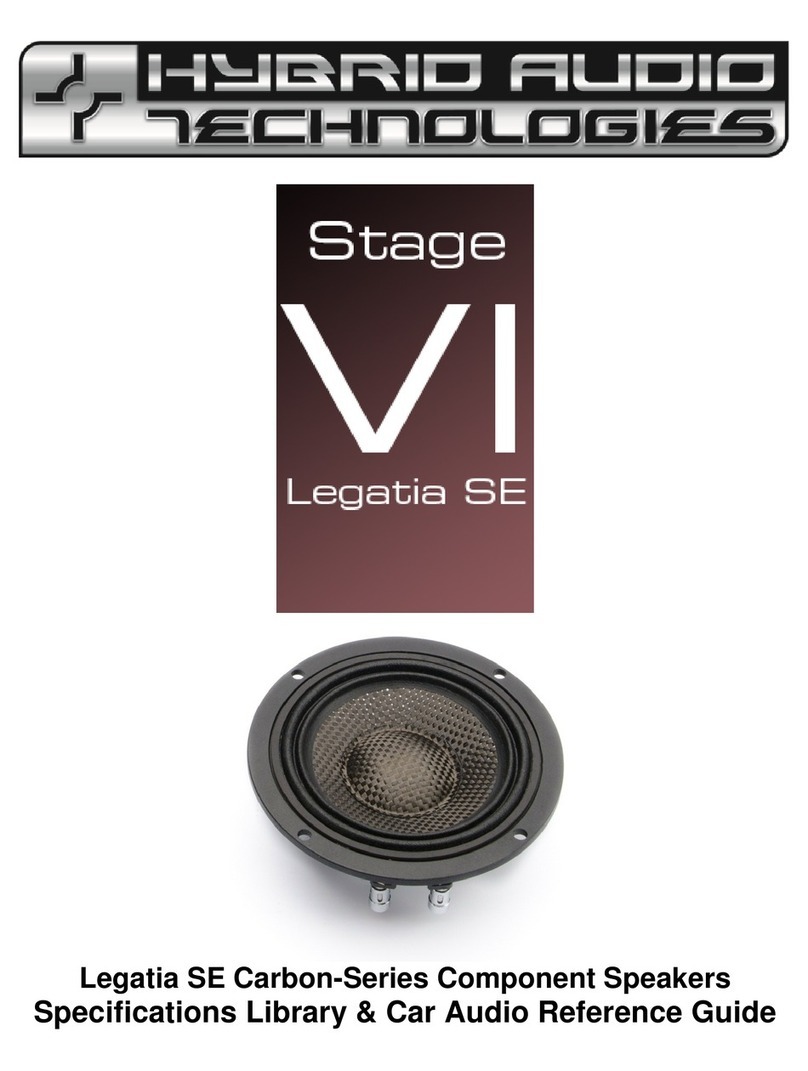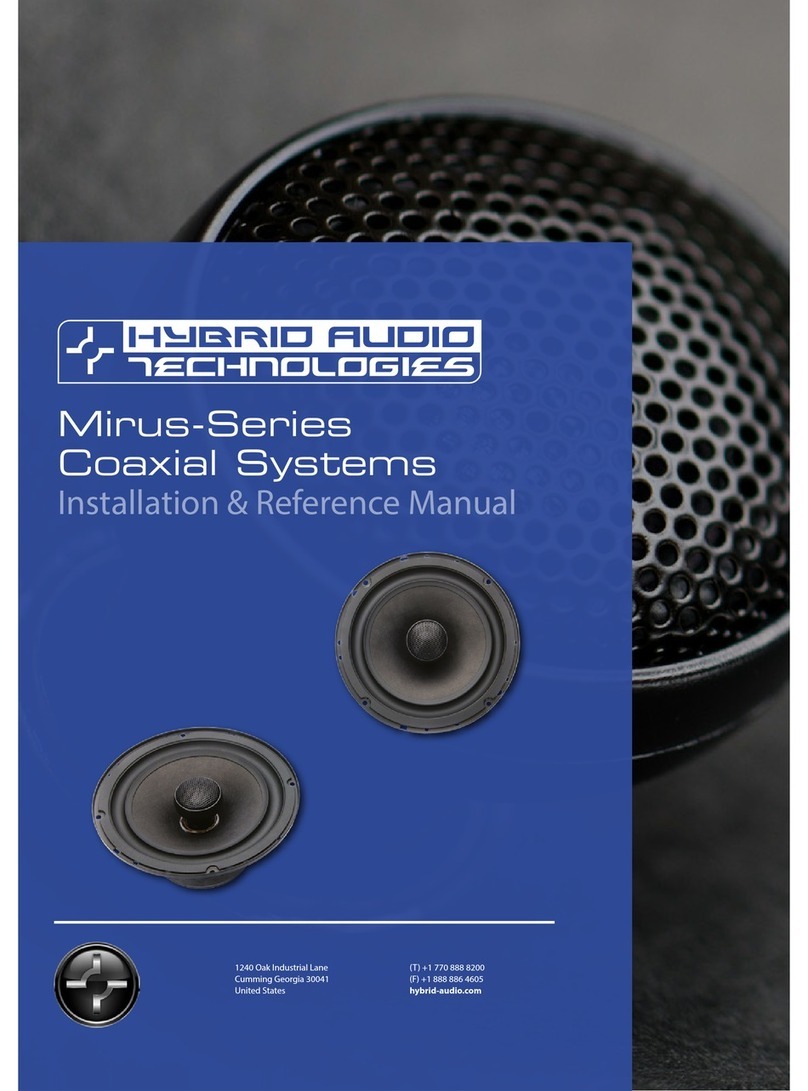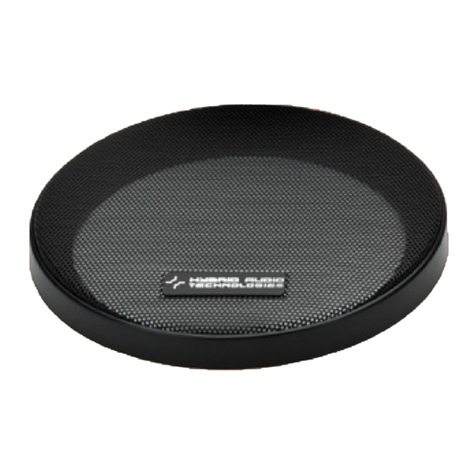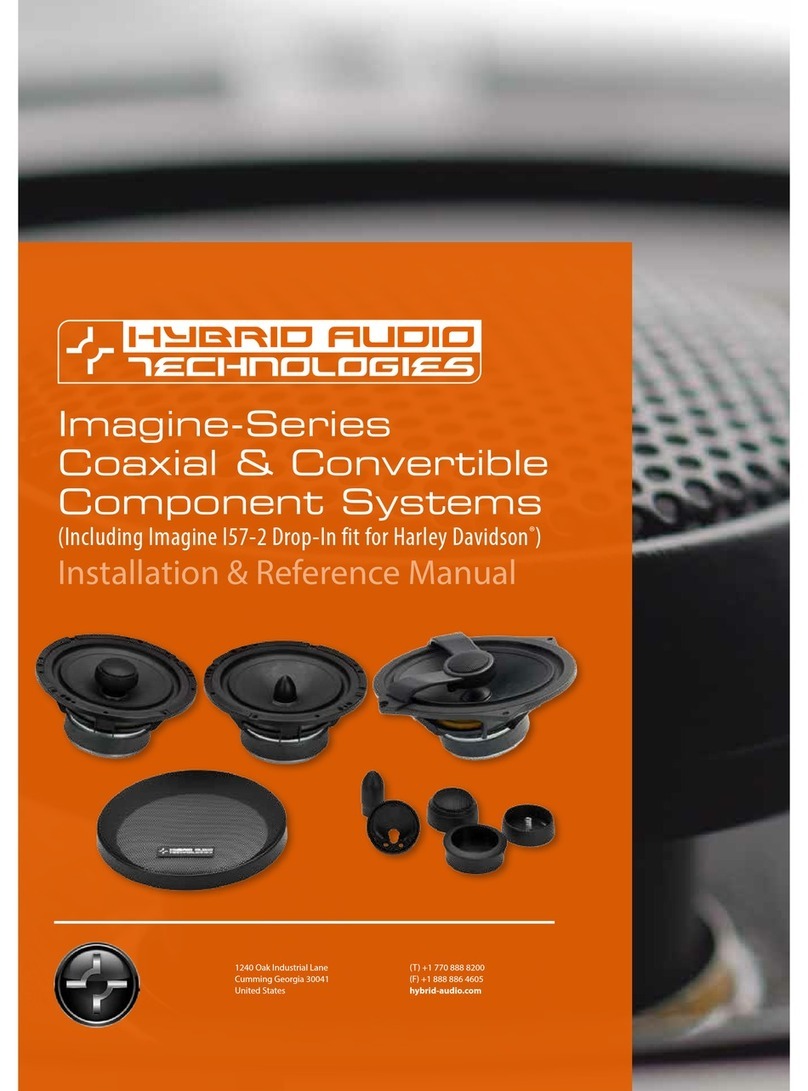
Although the Legatia
L2x is listed in the Stage
V Legatia series, it has
multiple complimentary
uses for Legatia Pro
products as well, given the
complimentary crossover
topology and use of
low-tolerance, asymmetri-
cally-aligned componentry
and lack of board-mounted
equalization
L2x Two-Way Passive
Crossover
The Legatia L2x topology is an enhanced Stage
V version of the Stage IV Clarus C2x passive
crossover network. It’s no secret that Hybrid
Audio Technologies highly recommends the use
of active crossovers that are set-up and adjusted
by an industry specialist, such as a master tuner, or
a highly-qualied car audio shop installer (please
read any number of White Papers on the subject of
passive crossovers available at: hybrid-audio.com/
downloads). In some cases, however, using active
crossovers is not a viable option, so we designed
and manufactured the Legatia L2x to allow for
easy Legatia installations, especially when multiple
amplier channels and/or adequate active crossover
processing was not available in the car audio
installation.
The L2x can be used for two-way passively
crossed-over systems, or used as the two-way
dividing network for midrange and treble drivers
in a “quasi-active” three-way (six speaker) system,
where the midbass is actively crossed-over at
the amplier. The L2x is based loosely o of the
Clarus C2x crossover, with key enhancements,
including the option for vertical bi-wiring, as well
as an enhanced lter set using low-tolerance, super
high-quality parts.
Key Issues in Passive Crossover Design
Before highlighting the L2x’s design attributes, there
are certain key issues in passive crossover design
that the end-user should be aware of. For years,
vocal manufacturers have coerced the consumer
into believing that capacitors, coils, and resistors
are not only desirable, but are a requirement. One
notable “high-end” speaker manufacturer boasts
that they spend “months” working on crossover
designs to ‘enhance’ their speakers. To ‘enhance’
means to add considerable ltering to x speaker
response anomalies, aka poor speaker designs.
Our speaker design philosophy is to spend the
time and resources necessary to make the speakers
exceptional in the design phase, and then use
simpleton ltering to protect only for thermal
protection at resonance and provide the desired
frequency response ltering via crossovers. It is
our philosophy that the passive crossover should
not contain any level of equalization; none of our
designs, in any series, use crossovers that contain
any form of equalization beyond simple tweeter
attenuation. We believe in making the speaker
great, not trying to x a poor speaker with ltering
and attenuation. There’s no crossover in the
world that can make a poorly-designed speaker
sound good. This is why there’s a relatively simple,
high-quality crossover topology employed on
the Legatia L2x crossover, with no additional
board-mounted equalization. And this is also why
we implore you to use our world-class speaker
systems in concert with the L2x.
Attributes
The Legatia L2x is a bi-amplied two-way passive
crossover for use with virtually any midrange,
midbass and tweeter pairing Hybrid Audio
manufactures. The following are the L2x’s design
attributes:
Filter Set
The L2x is a bi-wired two-way passive crossover that
has the following lters:
Lowpass (midrange): 5,700 Hz at 12 dB/octave
Linkwitz Riley
Highpass (treble): 5,200 Hz at 12 dB/octave Linkwitz
Riley
The only ltering on the board is mentioned above,
and in essence are elementary highpass and
lowpass lters common in any two-way crossover
design. As noted above, there is no board-mounted
equalization specic to one brand or type of
midrange or tweeter, or common of competitor’s
designs where equalization correction (ltering) is
added. The L2x can be used with any number of
drivers we produce.
The L2x passive crossover networks incorporate
super high quality and low tolerance metalized
polypropylene lm capacitors, air-core inductors,
and low tolerance non-inductive resistors. No
output level switches were used in the passive
crossover design because switches add a resistive
eect and are typically of extremely low quality.
Additionally, “jumper pins”add an unnecessary
pair of splices in the signal path to the tweeter, and
were not included in our design either. Rather, all
tweeter level adjustments are done on the board
level with dedicated non-inductive resistors;
tweeter attenuation is accomplished by selecting
the appropriate output (-3 dB, 0 dB, or +3 dB) on the
passive crossover circuit board. The components
selected are complimentary and ensure no
appreciable signal degradation between the input
and output side of the crossovers. Likewise, the
capacitors and inductors are arranged on the
board to reduce the coupling between circuits and
electromagnetic interference by basic physical
separation, while still keeping the footprint size
of the circuit board small. Finally, the use of 12
dB/octave lters on both low pass and high pass
minimizes phase-related distortion typical of
crossovers with mismatched orders, and ensures
relative phase-coherency.
L2x Cont’d on following page...
Legatia Pro
Speaker
Design
© Hybrid Audio Technologies • Cumming, GA • 770.888.8200 © Hybrid Audio Technologies • Cumming, GA • 770.888.8200
18 19
































